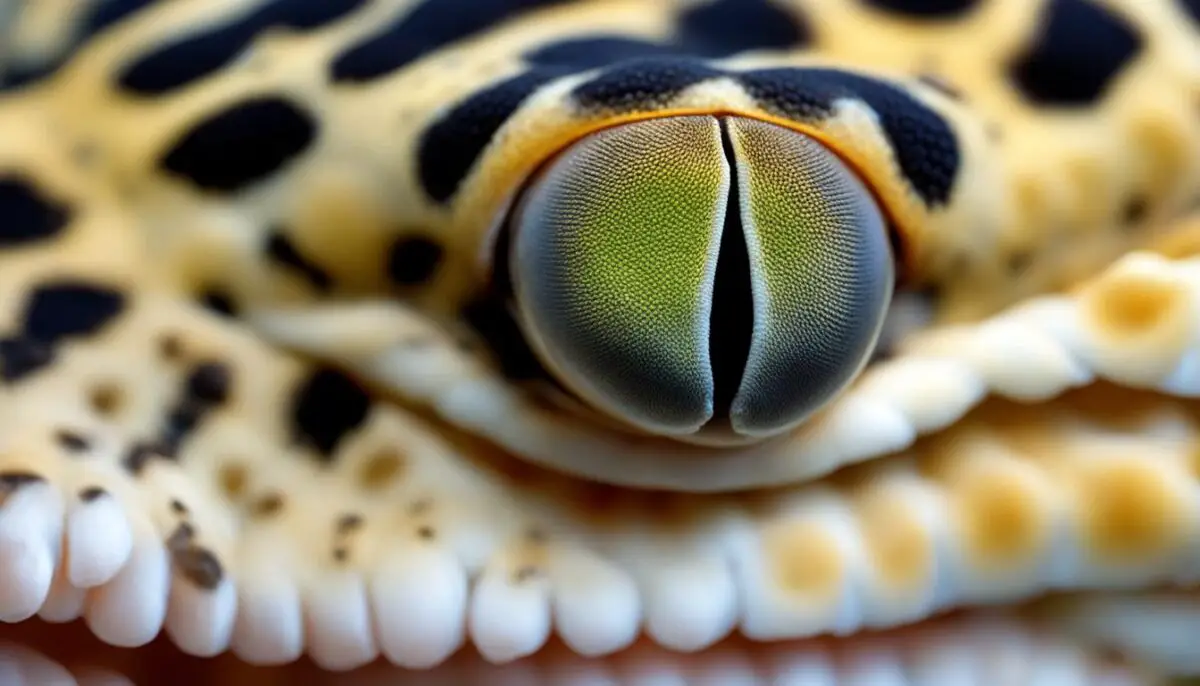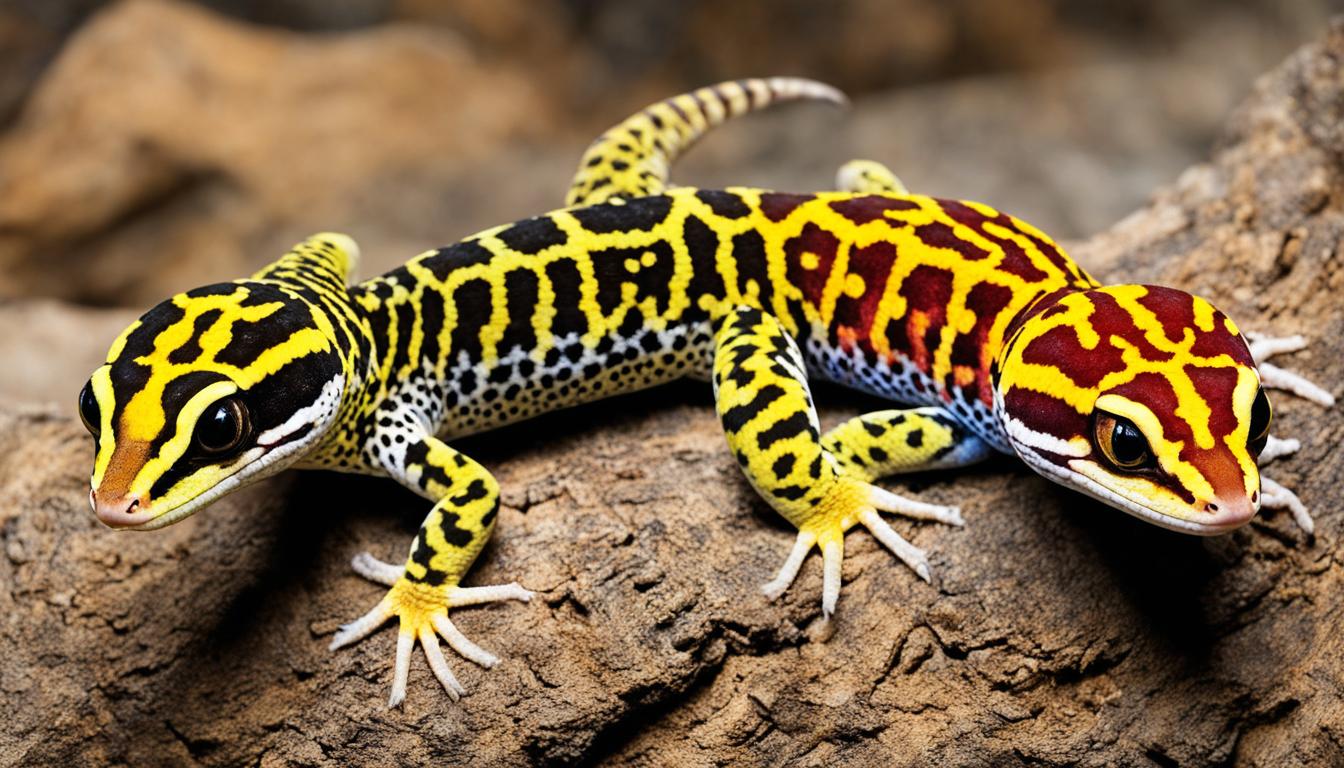Are you a proud owner of a leopard gecko, but unsure about its gender? Determining the gender of these fascinating creatures can be a challenging task without the right knowledge and observation. But fret not, we’re here to help you understand how to identify the male and female leopard geckos with confidence!
Examining the underside of your leopard gecko near the tail is the key to unlocking their gender. However, it’s crucial to handle them with care to avoid causing stress or risking the gecko dropping its tail. We recommend waiting until your gecko is at least six months old before attempting to determine its sex. This gives them time to develop the necessary physical characteristics that differentiate males from females.
Male leopard geckos have distinct pre-anal pores arranged in a V-shaped pattern, visible hemipenile bulges behind the vent, and femoral pores on the underside of their hind legs. These physical traits are the telltale signs of a male leopard gecko. On the other hand, female leopard geckos do not have visible pre-anal pores or femoral pores like males, but they do possess hemipenile bulges, albeit less prominent.
Knowing the gender of your leopard gecko is essential for various reasons. It allows you to give them appropriate names, understand their unique behaviors and needs, and plan for breeding if desired. So, without further ado, let’s delve into the fascinating world of leopard gecko gender identification!
Key Takeaways:
- Determining the gender of a leopard gecko requires careful observation of their physical characteristics.
- Male leopard geckos have pre-anal pores, hemipenile bulges, and femoral pores, while females lack visible pre-anal and femoral pores but possess hemipenile bulges.
- Handle leopard geckos gently to prevent tail dropping or causing them stress.
- Wait until your gecko is at least six months old for accurate gender determination.
- Knowing the gender of your leopard gecko is crucial for naming, breeding, and understanding their unique behaviors and needs.
Identifying Male Leopard Geckos
Male leopard geckos can be identified by their pre-anal pores, which form a distinct V-shaped row in front of their vent. These pores exude a waxy material as the gecko matures. They also have visible hemipenile bulges behind the vent, where their male reproductive organs, called hemipenes, are located. These bulges can be gently pushed out to confirm the gecko’s gender, but it is not recommended as it can cause injury or prolapse. Male leopard geckos also have femoral pores on the underside of their hind legs, which appear as small bumps. These physical characteristics are the key indicators of a male leopard gecko.

Identifying Female Leopard Geckos
When it comes to identifying female leopard geckos, there are some key characteristics to look out for. Unlike males, females do not have visible pre-anal pores or femoral pores. However, they do possess hemipenile bulges behind the vent, similar to males. These bulges may not be as prominent as in males and can be more difficult to spot.
The absence of pre-anal pores and femoral pores is the main distinguishing factor for female leopard geckos. While they may not have the same external indicators as males, the presence of hemipenile bulges helps differentiate them from other gecko species and confirms their female gender.
It’s important to note that proper observation and handling techniques are necessary to accurately identify the gender of a leopard gecko. Take the time to carefully examine their vent area and compare it to the descriptions provided for male and female geckos.
https://www.youtube.com/watch?v=9_udXGCWcdA
“The absence of pre-anal pores and femoral pores is the main distinguishing factor for female leopard geckos.”
Sexing Leopard Geckos as Hatchlings
Determining the gender of leopard gecko hatchlings can be challenging, as they do not exhibit visible sexual characteristics at a young age. Sexing techniques, such as examining pre-anal pores, hemipenile bulges, and femoral pores, may not be reliable until the gecko matures at around six months of age. Therefore, it is best to rely on the expertise of experienced breeders or wait until the gecko reaches an appropriate age for accurate sex determination.
Conclusion
Understanding the gender of your leopard gecko is essential for several reasons. It enables you to choose an appropriate name for your gecko, gain insights into their unique behaviors, and make informed decisions about breeding if you desire to expand your leopard gecko family. Leopard gecko genetics also come into play in determining their gender, as the temperature at which their eggs are incubated influences the sex of the hatchlings.
When attempting to determine the gender of your leopard gecko, it is crucial to handle them with care to prevent stress or the risk of tail dropping. Gently observing the presence or absence of pre-anal pores, hemipenile bulges, and femoral pores can provide valuable clues to accurately determine whether you have a male or a female leopard gecko.
Regardless of the gender, providing your leopard gecko with proper care and creating a suitable environment is vital for their overall health and well-being. Ensuring they have a balanced diet, appropriate temperature and humidity levels, and a comfortable habitat will promote their happiness and longevity.
By understanding leopard gecko genetics and the characteristics that distinguish their gender, you can better care for these fascinating reptiles and create a thriving environment for them to thrive. So, embrace the journey of leopard gecko breeding and genetics, and enjoy the companionship of these captivating creatures!
FAQ
How can I determine the gender of a leopard gecko?
To determine the gender of a leopard gecko, you can examine the underside near the tail. Male leopard geckos have visible pre-anal pores in a V-shaped pattern, hemipenile bulges behind the vent, and femoral pores on the underside of their hind legs. Female leopard geckos lack pre-anal and femoral pores but may have less noticeable hemipenile bulges.
What are the physical characteristics of male leopard geckos?
Male leopard geckos have distinct pre-anal pores in a V-shaped pattern, visible hemipenile bulges behind the vent, and femoral pores on the underside of their hind legs.
How can I identify female leopard geckos?
Female leopard geckos do not have visible pre-anal or femoral pores like males. However, they may have less noticeable hemipenile bulges behind the vent.
How do you determine the gender of leopard gecko hatchlings?
Determining the gender of leopard gecko hatchlings can be challenging, as they do not exhibit visible sexual characteristics at a young age. Sexing techniques such as examining pre-anal pores, hemipenile bulges, and femoral pores may not be reliable until the gecko matures at around six months of age. It is best to rely on the expertise of experienced breeders or wait until the gecko reaches a suitable age for accurate sex determination.
Why is it important to know the gender of a leopard gecko?
Knowing the gender of your leopard gecko is important for naming, understanding their behaviors, and planning for breeding if desired. Leopard gecko genetics also play a role in determining their gender.


